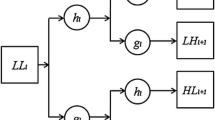Abstract
Schizophrenia (SCZ) is a mental disorder, that is, persons loss their normal life and they supposed to live in an imaginary world of hallucination or delusions. Segmentation of brain tissue is an important task for the accurate detection of the disease SCZ. Here, proposing a novel method to segment the brain tissue and obtained the dominated features for the detection. Medical imaging is used and is a technique that processes and creates visual representation of the interior of a body for clinical analysis and medical intervention. Here, integrating two segmentation procedures is based on probability distribution and various intensity level heuristic segmentations, which make use of swarm optimization. A better result can be made using the extracted features of gray matter. ANOVA was used to analyze the statistical performance. The result shows that it yields accuracy 99.09%, sensitivity 100% and specificity 98.14% for schizophrenic detection with the use of random forest classifier.
Access this chapter
Tax calculation will be finalised at checkout
Purchases are for personal use only
Similar content being viewed by others
References
Sie M (2011) Clinical focus-schizophrenia—clinical features and diagnosis. Clin Pharmacist 3(2):41
Jensen JH, Helpern JA (2010) MRI quantification of non-Gaussian water diffusion by kurtosis analysis. NMR Biomed 23(7):698–710 (2010)
Zhu J, Zhuo C, Qin W, Wang D, Ma X, Zhou Y, Yu C (2015) Performances of diffusion kurtosis imaging and diffusion tensor imaging in detecting white matter abnormality in schizophrenia. NeuroImage Clin 7:170–176
Basser PJ, Jones DK (2002) Diffusion-tensor MRI: theory, experimental design and data analysis–a technical review. NMR in Biomed Int J Devoted Dev Appl Magnet Reson Vivo 15(7–8):456–467
Liu J, Li M, Pan Y, Wu F-X, Chen X, Wang J (2017) Classification of schizophrenia based on individual hierarchical brain networks constructed from structural mri images. IEEE Trans Nanobiosci 16(7):600–608
Castellani U, Rossato E, Murino V, Bellani M, Rambaldelli G, Perlini C, Tomelleri L, Tansella M, Brambilla P (2012) Classification of schizophrenia using feature-based morphometry. J Neural Trans 119(3):395–404
Lee J, Chon M-W, Kim H, Rathi Y, Bouix S, Shenton ME, Kubicki M (2018) Diagnostic value of structural and diffusion imaging measures in schizophrenia. NeuroImage Clin 18:467–474
Radulescu E, Ganeshan B, Shergill SS, Medford N, Chatwin C, Young RCD, Critchley HD (2014) Grey-matter texture abnormalities and reduced hippocampal volume are distinguishing features of schizophrenia. Psychiatry Res Neuroimag 223(3):179–186
Honnorat N, Dong A, Meisenzahl-Lechner E, Koutsouleris N, Davatzikos C (2017) Neuroanatomical heterogeneity of schizophrenia revealed by semi-supervised machine learning methods. Schizophrenia Res
Vadaparthi N, Yarramalle S, Penumatsa SV (2011) Unsupervised medical image segmentation on brain MRI images using Skew Gaussian distribution. In: International conference on recent trends in information technology (ICRTIT), pp 1293–1297
Kalavathi P (2013) Brain tissue segmentation in MR brain images using multiple Otsu’s thresholding technique. In: 8th international conference on computer science & education, vol x, pp 639–642
Biju KS, Alfa SS, Lal K, Antony A, Kurup Akhil M (2017) Alzheimer’s detection based on segmentation of MRI image. Procedia Comput Sci 115:474–481
Tsou C-H, Lu Y-C, Yuan A, Chang Y-C, Chen C-M (2015) A heuristic framework for image filtering and segmentation: application to blood vessel immunohistochemistry. Anal Cellular Pathol
Selvaraj D, Dhanasekaran R (2013) A review on tissue segmentation and feature extraction of MRI brain images. Int J Comput Sci Eng Technol (IJCSET) 4(10):1313–1332
Andreone N, Tansella M, Cerini R, Rambaldelli G, Versace A, Marrella G, Perlini C, Dusi N, Pelizza L, Balestrieri M, Barbui C (2007) Cerebral atrophy and white matter disruption in chronic schizophrenia. Eur Arch Psychiatry Clin Neurosci 257(1):3–11
Brain MRI: MR-TIP: https://www.mr-tip.com/serv1.php?type=db1&dbs=Brain%20MRI
Openfmri: https://openfmri.org/dataset
Singh BB (2017) Shailendra Patel: Efficient medical image enhancement using CLAHE enhancement and wavelet fusion. Int J Comput Appl 167(5):0975–8887
Krishnan TP, Balasubramanian P, Krishnan C (2016) Segmentation of brain regions by integrating meta heuristic multilevel threshold with markov random field. Current Med Imag Rev 12(1):4–12
Raja R, Sinha N, Saini J (2014) Characterization of white and gray matters in healthy brain: an in-vivo diffusion kurtosis imaging study. In: IEEE international conference on electronics, computing and communication technologies (CONECCT)
Livadiotis G, McComas DJ (2013) Fitting method based on correlation maximization: Applications in space physics. J Geophys Res Space Phys 118(6):2863–2875
Vidhya R, Rajarajeswari P, Ellammal S (2014) Classification of tissues for detecting the multiple sclerosis lesions in brain MRI. Int J Adv Res Comput Sci Technol 2
Melgani F, Bruzzone L (2004) Classification of hyperspectral remote sensing images with support vector machines. IEEE Trans Geosci Remote Sens 42(8): 1778–1790
Lee S-H, Kubicki M, Asami T, Seidman LJ, Goldstein JM, Mesholam-Gately RI, McCarley RW, Shenton ME (2013) Extensive white matter abnormalities in patients with first-episode schizophrenia: a diffusion tensor imaging (DTI) study. Schizophr Res 143(2–3):231–238
Author information
Authors and Affiliations
Corresponding author
Editor information
Editors and Affiliations
Rights and permissions
Copyright information
© 2021 Springer Nature Singapore Pte Ltd.
About this paper
Cite this paper
Angali, P.T., Biju, K.S. (2021). Detection of First-Episode of Schizophrenia Brain MRI Images Using Random Forest Classifier. In: Komanapalli, V.L.N., Sivakumaran, N., Hampannavar, S. (eds) Advances in Automation, Signal Processing, Instrumentation, and Control. i-CASIC 2020. Lecture Notes in Electrical Engineering, vol 700. Springer, Singapore. https://doi.org/10.1007/978-981-15-8221-9_255
Download citation
DOI: https://doi.org/10.1007/978-981-15-8221-9_255
Published:
Publisher Name: Springer, Singapore
Print ISBN: 978-981-15-8220-2
Online ISBN: 978-981-15-8221-9
eBook Packages: EngineeringEngineering (R0)




